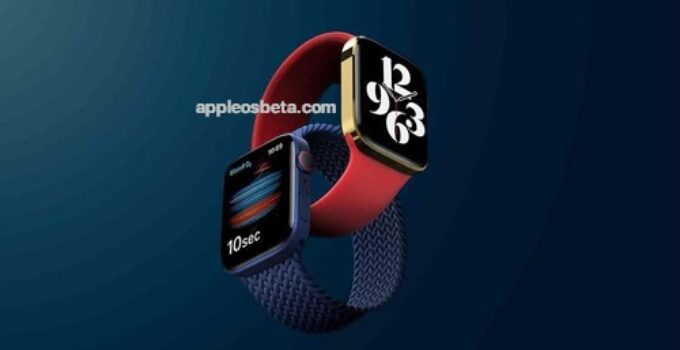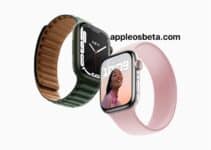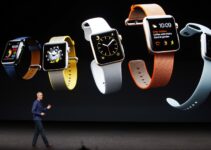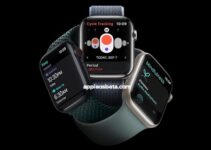How to track overnight temperature changes with Apple Watch? Learn how to set up and calibrate your Apple Watch temperature sensor so you can measure core wrist temperature and start tracking changes.
Is your iPhone draining quickly with iOS 16? How to fix?
How does the Apple Watch measure core wrist temperature?
Apple Watch Ultra and Apple Watch Series 8 feature a new sensor that measures skin and ambient temperature. Apple has stated (and written in its patent) that reliable skin temperature detection actually requires two sensors, one on the back of the crystal to contact your skin, and another just below the display to measure the ambient temperature. The algorithm uses data from two sensors to accurately calculate the temperature at the surface of your skin.
Apple’s support document clarifies that a five-day calibration period is required before the watch can set the wrist’s base temperature.
“After about five nights, your Apple Watch will determine your baseline wrist temperature and track nightly changes,” it says.
How to track changes in wrist temperature with Apple Watch?
Wrist temperature tracking and related features require an Apple Watch Series 8 or Apple Watch Ultra. Older models do not support this feature. You will need to set up “Sleep Mode” with “Track sleep with Apple Watch” turned on. Be sure to turn on the Sleep focus profile for at least four hours a day for about five nights.
You can view your saved measurements by launching the Health app on your iPhone and then go to Overview → Body Measurements → Wrist Temperature.
If the sensor is not calibrated, you will see “Additional Data Needed” at the top of the chart instead of the actual reading. You’ll also see the number of nights left before wrist temperature data is available right below the chart.
How to interpret the stored wrist temperature data?
The collected data for each night is displayed in the Health app as a relative change from the set baseline wrist temperature. Because fluctuations in body temperature each night can be indicative of illness or phases of the menstrual cycle, relative changes give you a better idea of your overall health.
Apple Watch Series 8 and Ultra, by tracking changes in wrist temperature during sleep, help determine ovulation.
When will the sensor need to be recalibrated?
Five-point calibration on one watch must be performed once. Once the sensor is calibrated, the watch will take wrist temperature readings every five seconds. Apple explains that this improves accuracy by reducing environmental impacts.
If the watch is returned after being repaired or you plug in a new one, you will need to calibrate the sensor again within five nights. Here are some reasons why the temperature sensor may not work: the watch is too loose (make sure the back crystal is in contact with your wrist), your age (you must be at least 14 years old) and “certain physiological, lifestyle and environmental factors”. Wednesday.”
How do I disable wrist temperature measurement and tracking?
To turn off wrist temperature, open the Watch app on iPhone and go to My Watch → Privacy → Wrist Temperature, then turn off the corresponding option.
To turn off wrist temperature tracking, open the Health app on your iPhone and go to Overview → Cycle Tracking → Options, then turn off Use Wrist Temperature. This will also turn off ovulation retrospective estimates and period predictions.
Is it possible to see the exact body temperature at any time?
No, you can’t use Apple Watch to take your temperature at any time, as you can with heart rate. During active focused “Sleep”, the device automatically polls the sensor every five seconds. You can only view the history of relative changes in the set wrist temperature in the Health app.
Can Apple Watch be used as a thermometer?
No. Neither Apple’s temperature sensor nor its algorithm works like a thermometer.
Is the Apple Watch a medical device?
Just because Apple Watch can measure heart rate or wrist temperature doesn’t mean Apple Watch is a medical device. Apple explicitly states that the temperature measurement feature is “not intended for use in medical diagnosis, treatment, or for any other medical purpose.”



